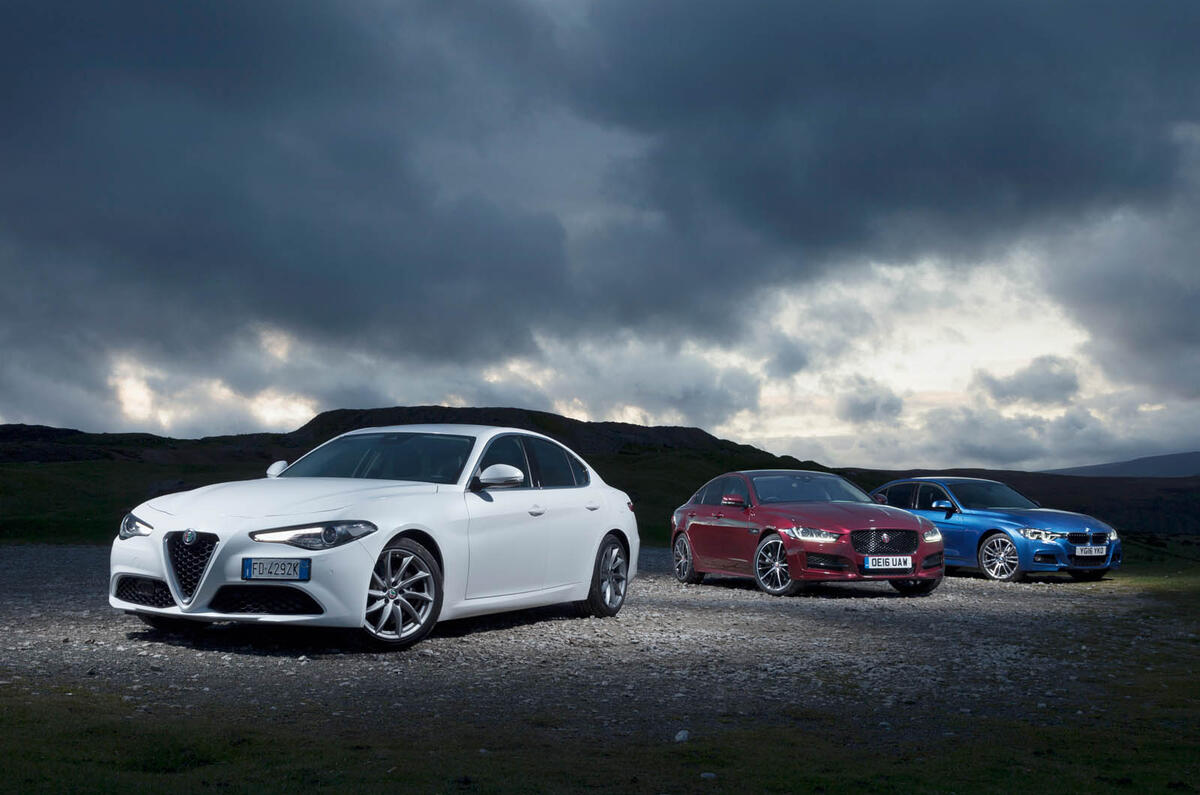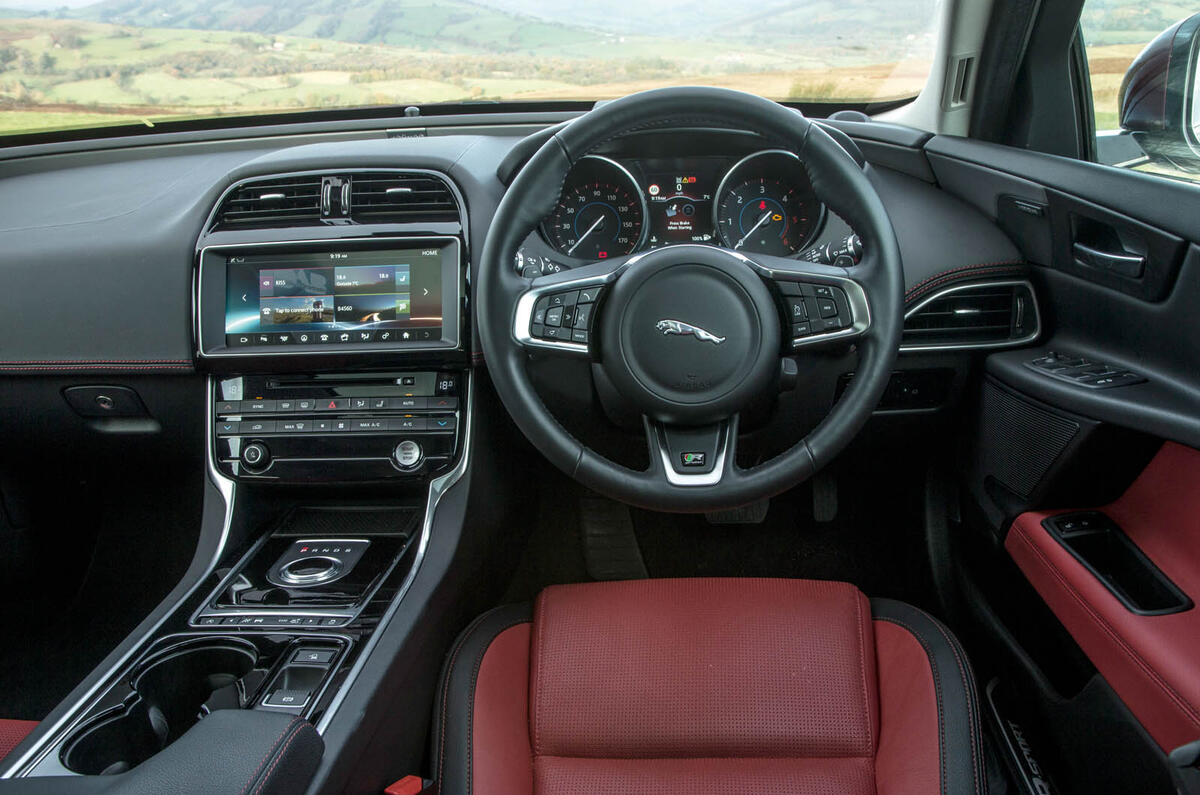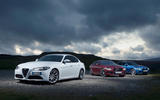The Alfa Romeo Giulia has been such a long time coming that there’s no little irony that I’m stuck waiting for it now. Stuck in the office, staring at the ceiling. Waiting and staring. How long have I been waiting?
Well, it has been five years since the Alfa 159 dropped, old and unloved, off a production line cliff face. But it represented only part of the waiting period, not its beginning. Before that, there was the 156 and the 155. Both were pretty. One was good.
Neither, though, was the front-engined, rear-wheel-drive saloon that we felt Alfa should be building if it wanted to be Italy’s BMW and a proper volume contender. No matter that it hadn’t actually built such a car since Fiat massaged the ailing brand into Lancia in the mid-1980s. It would, we felt sure, be like riding a bike for the evocative brand. Muscle memory would take over.

Turin itself needs no help locating the right kind of inspiration; the name Giulia, after all, is an homage to precisely the kind of model we’re talking about. The four-door Type 105 of the 1960s was the sort of car that made Alfa rightly famous: a swept-back, featherweight saloon coupled to the firm’s fantabulous Twin Cam engine via the medium of a driven back axle. The original Giulia sprouted memorable add-on trim names: the TI Super, the Nuova Super – each shifting quickly for their day. A day that ended in 1977.
Forty years is a long time for the spirit of a car to flutter about in the ether – long enough to excuse a morning spent waiting in the office for its namesake to be whisked from the dockside to Autocar’s second home under Heathrow’s flight path. At least the Giulia’s rivals have turned up. One is the standard, the other its successor. In the marine blue corner is the current BMW 320d, hewn over time like a Neolithic arrowhead and implacable, brilliant evidence of what Alfa should have been doing and then patiently fine-tuning all this time. This one is our long-term test car, and the fact that it is dirty and has an xDrive badge on the back only confirms my affection for its attitude and flint-edged purposefulness.
In the plum red corner is the car fashioned from the ground up to beat it. The Jaguar XE is a very British, very Jaguar creation. It’s tempting to think of it as the culmination of a journey that began with the demise of the X-Type, but that would lowball Jaguar’s current trajectory. Better instead to acknowledge its finer points as a marker of remarkable progress – and the good bits of the Ingenium-engined, aluminium-underpinned XE are exceptional. Certainly, it is Jaguar galloping forward on self-belief, conviction and talent and gunning not just for recognition but heaps of buyers, too. It is Jaguar as Alfa would probably like to see itself: Europe’s emerging premium powerhouse, nourished by its long heritage yet now emphatically aimed at profitability.




















































Join the debate
Add your comment
i'd put them in reverse order
i have had an extended test drive in all 3 of these vehicles... a 320d xdrive m-sport for 1 week, a jaguar xe 180 r-sport for 2 weeks and an alfa giulia speciale for 2 weeks (that should have been the model they tested here not the super). all 3 share the same basic 8 speed zf box.
I found the 3 series "twitchy" rather than accurate and the seat controls, footwells (tiny!) and ergonomics were not to my liking (awful!). gearbox was ok though with well timed changes.
The jag was nice to drive, well damped but the infotainment was crap and really slow. dashboard was a bit ;-/ ...placing the boot release next to the lane assist button . Gearbox was utter sh*te though and had a horrible lag before downshifts.
Alfa felt like an italian 3 series inside but it had decent ergonomics (yeah i know!! italian!). It also felt really agile. the damping was defintely on the firm side but of the 3 it was by FAR the best to drive. the gearbox was always ready with the right gear, in dynamic mode the changes were almost telepathic. the steering is spectacular...so fast and delicate. It was the only car of the 3 i consistently chose to take the long road home even adding an hour to my journey by going down from inverness via the A82 just for shits and giggles.
Is Alfa back?
I test-drove the 150hp diesel and the 200hp petrol Giulia. Only the 200hp car got 1 out 3 of my preferences, the automatic, turbo-diesel none. Which somehow I preferred. Quiet, smooth, eager, zippy, seamless gear changing, I was shocked! The petrol had even more go, but was not smoother, somehow. Maybe it was just the particular ones I drove. There was nothing big I disliked, in fact on the main issues, wow! The chassis? Wow! I didn't like the fuel/temp gauges and the limited info per screen selection- couldn't have trip computer and outside temp for example- unless it can be changed in the settings.
I liked the article and I am not sure why there are so many negative comments about each person's preferences? Cars have to fulfill multiple roles, with different interpretations of those roles and of course completely different priorities. The XE does have less rear room and boot space. But should that count against it for me when only a few times a year I have more than 1 passenger?
Now because I know Alfa will be reading this, here is their next car: a compact Giulia/slightly longer Giulietta, with a notch-back for practicality (a la Alfasud Sprint/4-series), cloth seats, a great stereo and of course mine in Alfa rosso. Oh, manual, petrol multi-jet non-turbo, with decent real-world economy/emissions.
Hah!
This article is spot on about Nic's writing in particular
https://driventowrite.com/2016/06/02/when-words-collide/
"No, the prime beef here is Nic Cackett’s verbal prolixity; a verboseness that steadfastly ploughs through the rev limiter of verbiage, crosses the central reservation of garrulousness, before mounting the barriers of tautology and smashing to pieces in a shower of pleonasm. Yes indeed, with this piece Mr. Cackett, our Cup truly runneth over."
But regarding this actual test, what I have been able to surmise/extrapolate from the sea of word vomit, is that the Giulia is quicker, lighter, just as good to drive, better looking (subjectively), but that the main knob for controlling the infotainment doesn't feel as nice to hold, so the whole car isn't as good. Seem about right?
I own a BMW btw - M135. Have driven 3 series etc, the interiors aren't THAT good in terms of build quality/rattles etc. Where BMW are leagues ahead though is engines imo. However, from the article it seems the new multijet gets high praise also.
Come time for my next car the Giulia will be a serious contender, particularly when the 280hp petrol arrives. However, this car press bias really needs called out.